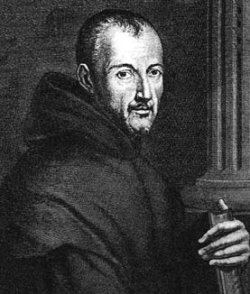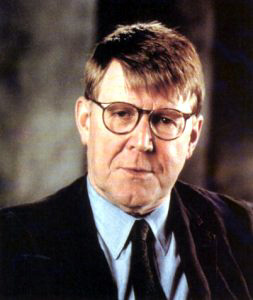This article is about the American politician. For Bob Graham the English Lakeland fell-runner and his long-standing Lakeland 24-hour record see Bob Graham Round. Daniel Robert Graham (born
November 9,
1936) is an
American politician. He was a
United States Senator from
Florida from
1987 to
2005 and the
governor of that state from
1979 to 1987. Following a failed bid for the
Democratic Party nomination in the
2004 presidential race, Graham was considered a possible running mate for
John Kerry.
Graham dropped out of the race for the Democratic presidential nomination on
October 6,
2003 and announced his retirement from the Senate on
November 3,
2003.
Graham just finished serving a one-year term as an Institute of Politics Fellow at
Harvard University's
John F. Kennedy School of Government. He is now concentrating his efforts on establishing the Bob Graham Center for Public Service at his undergraduate alma mater, the
University of Florida.
 Personal background
Personal background Graham is a
Democrat who has never lost an election. He was first elected to the
Florida House of Representatives in
1966 and reelected in
1968. He was elected to the
Florida State Senate in
1970 and was reelected 1974.
Political career Bob Graham began Workdays in
1974, teaching a semester of civics at
Miami Carol City Senior High School in
Miami while serving in the
Florida Senate. He performed 100 Workdays in
1986 during his first successful campaign for U.S. Senate. Since then, he has completed 386 Workdays, more than a year's worth of days spent laboring side-by-side with the people he represents. His Workdays are an extension of his belief in a personal style of governing.
Graham has continued doing Workdays throughout his tenure as governor and in the United States Senate. His jobs have included service as a
police officer, busboy,
railroad engineer,
construction worker,
fisherman, garbageman, factory worker, and
teacher. On No. 365, he checked in customers, handled baggage and helped serve passengers on
US Airways.
Workdays Bob Graham was elected Governor of Florida in
1978 after a seven-way Democratic primary race in which he initially placed second to
Robert L. Shevin. His supporters at the time dubbed themselves "
Graham crackers." Graham was reelected in 1982 with 65% of the vote, defeating Republican
Skip Bafalis. As governor he was probably best known for his failure to stop the Mariel Boatlift, pro-environmental policy, and overseeing resumption of the Florida Death Penalty (16 people were
electrocuted when he was governor.)
Lieutenant Governor:
Wayne Mixson Secretary of State:
George Firestone Attorney General:
Alan Becker (1978–82),
Jim Smith (1982–86)
Treasurer:
Bill Gunter Comptroller:
Gerald Lewis Agriculture Commissioner:
Doyle Conner Education Commissioner:
Ralph Turlington U.S. Senator Graham announced his candidacy for
President of the United States in the
2004 election on the Democratic ticket on
February 27,
2003. However, on
October 7,
2003, he announced (with polls showing him in last place among a field of ten candidates) he was ending his presidential campaign, saying he started his campaign too late and had trouble raising money. In November, he announced that he would not seek another term in the Senate.
After
John Kerry became the presumptive Democratic nominee for president in March
2004, there was some discussion in the media that Graham might be on the
short list of Kerry's choices for
vice president, presumably at least in part because having Graham on the ticket could help Kerry win Florida in the presidential election. Shortly before Kerry chose Sen.
John Edwards, the Kerry campaign printed "Kerry-Graham" posters and bumper stickers in case Edwards declined to be Kerry's running mate. Many wonder whether Graham's selection as a vice presidential candidate would have won Florida, and thus, the presidency, for the Democrats.
Presidential candidate After teaching at Harvard University for the 2005–2006 academic year, Graham is now focused on founding two centers to train future political leaders, one at the
University of Florida — where he earned his bachelor's degree in history in 1959 — and one in his hometown at
University of Miami. The UF Center, known as the Bob Graham Center for Public Service
[1], will be housed in the university's College of Liberal Arts and Sciences
[2] and will provide students with opportunities to train for future leadership positions, meet current policymakers and take courses in critical thinking, language learning and studies of world cultures. Over the summer of 2006, ground broke on the construction of Pugh Hall on the UF campus — funded by longtime friend of Graham, Jim Pugh, and his wife Alexis — which will house the new center.
Graham is also currently writing a book on civic education and how a citizen can participate in our democracy in effective ways.
Business interests On
November 18,
2005, the
Sunshine Skyway Bridge, which was rebuilt during Graham's time as Governor (supposedly with great input from him), was renamed the
Bob Graham Sunshine Skyway Bridge by the Florida Legislature.
On
May 6,
2006 at the Spring commencement for the College of Liberal Arts and Sciences, the
University of Florida awarded Bob Graham an honorary doctorate, the Doctor of Public Service.

 In popular culture
In popular culture
 Structure 2008
Structure 2008
 Government
Government
 Work
Work
 Life and work
Life and work Personal background
Personal background
 Queer Nation
Queer Nation



 Scope of the subject
Scope of the subject The Classics
The Classics Fox News Channel
Fox News Channel Future plans
Future plans